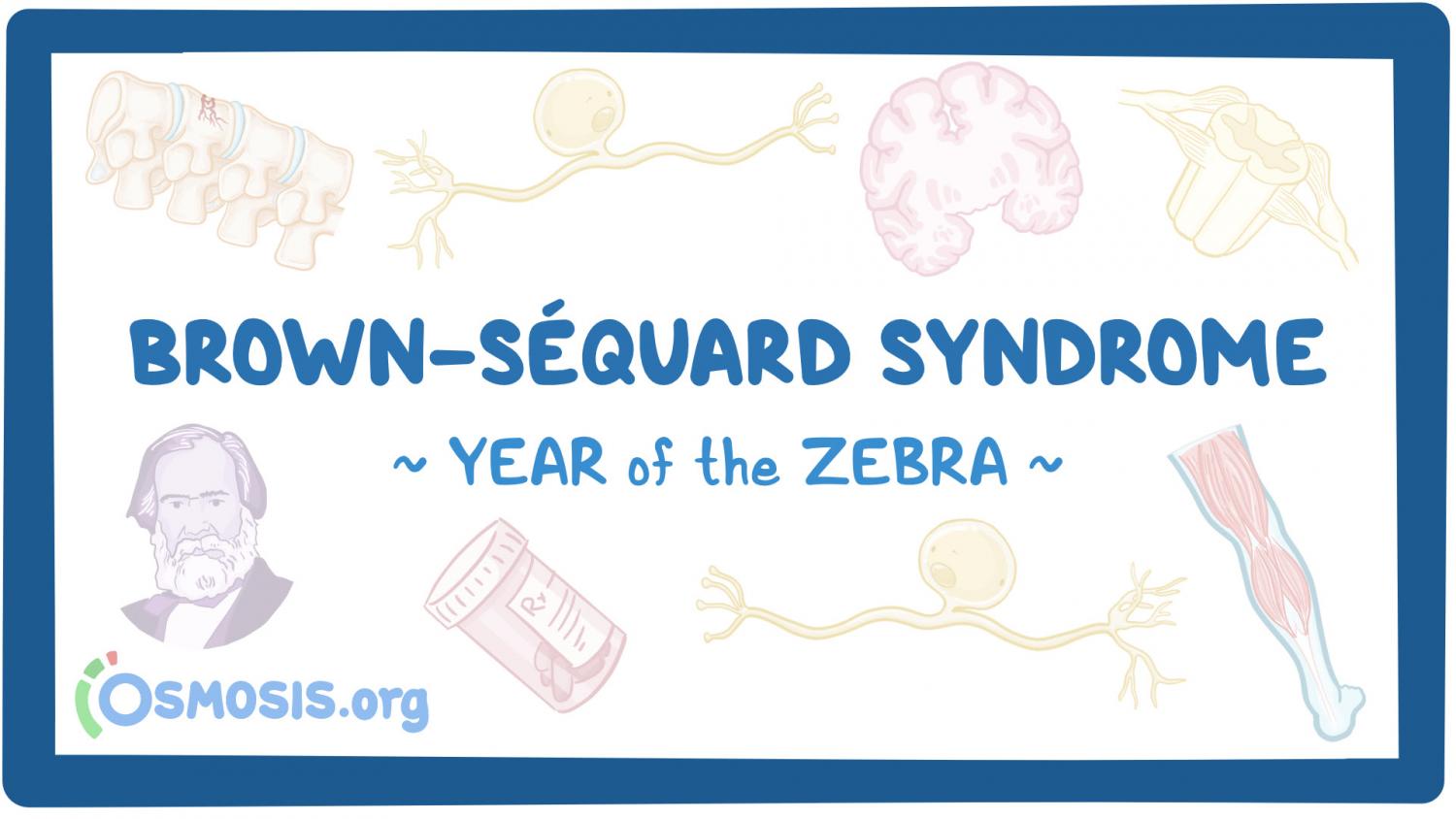
Rare Disease Education: Brown-Sequard Syndrome
Editor: Kelsey LaFayette, DNP, RN, FNP-C
"When you hear hoofbeats, think of horses, not zebras,” is a common saying in medical education that means you should think of common conditions first, instead of rare ones, in making a diagnosis. “Rare” is a relative term though and about 7,000 rare, or "zebra," conditions affect more than 350 million individuals worldwide. Although these conditions collectively affect an enormous number of people, each of these conditions individually is rare enough that it can be difficult to secure the resources to study them and to develop treatments and cures. Likewise, awareness of rare conditions may be low and health care professionals may not be familiar with their signs and symptoms making it more difficult to reach a correct diagnosis and provide effective treatments.
To increase knowledge about rare conditions, Osmosis and the National Organization for Rare Diseases (NORD) have collaborated on an initiative to bring education and awareness to the public. We are excited to be a part of this initiative because we believe everyone deserves quality health care, no matter how rare their condition.
Zebra of the Week: Brown-Sequard Syndrome
Have you ever stopped to think how your brain knows if you have just touched a scalding hot drink? Have you ever wondered how the muscles in your hand know exactly how much strength to apply while holding up a kitten? Our spinal cords are information superhighways relaying sensory signals from our extremities to the brain, which then processes the information, decides what to do, and then sends an execution order back through the spinal cord to the muscles to move.
Brown-Sequard syndrome is a rare disorder wherein one side of the spinal cord information superhighway is damaged, severing the connection between the brain and the corresponding rest of the body to varying degrees. Usually, the direct cause of the damage is trauma to the neck or back. Symptoms include the loss of the sensations of pain and temperature, usually on the opposite side and below the area of the trauma. The muscles can also be affected; there may be paralysis on the same side of the lesion that can evolve into degeneration of muscles permanently if diagnosis and intervention are delayed. Unfortunately, there may also be loss of bladder and bowel control.
Brown-Sequard syndrome is estimated to be 2% of all traumatic spinal cord injuries which in turn affect about 30-40 per 1 million people yearly.
To learn more about the mechanisms and treatment of Brown-Sequard syndrome, watch the dedicated Osmosis video on YouTube and Osmosis.org
Meet Brooke Thabit
Growing up in South Florida, Brooke Thabit was happiest when in the water. She was an avid surfer who loved the ocean. Then, at just 17-years-old, Brooke had a diving accident. She broke her neck and her spinal cord had been severed.
Today, this courageous young woman is smiling despite having to re-learn how to navigate life. She is an ambassador with Wings for Life working to raise awareness for spinal cord injury. Brooke has even had a skydiving experience, showing her that even though she cannot walk, she can still fly. Going even further, she is building a career in designing homes to suit the needs of people with mobility problems. Watch her inspiring story above.
Organization Taking Strides
The American Spinal Injury Association (ASIA) was founded in 1973 by physicians and other medical professionals who came together to address the challenges and intricacies of treating spinal cord injuries. In its journey to fulfill the mission to improve the lives of persons affected by spinal cord injury, ASIA has expanded its reach and activities on multiple fronts. On the research side, they have founded the “Topics in Spinal Cord Injury Rehabilitation” journal to give a platform for quality peer-reviewed research. They offer resources and guidelines for quality research on topics such as Institutional Review Boards, Investigator Responsibilities, Adverse Event Reporting, and more. On the advocacy front, they have a dedicated committee that works to enact policies that enhance the quality of life for individuals with spinal cord injuries. On the education front, they are active through workshops, courses, and conferences, for medical professionals, patients, and the general public to elucidate the complexity of spinal cord injuries.
